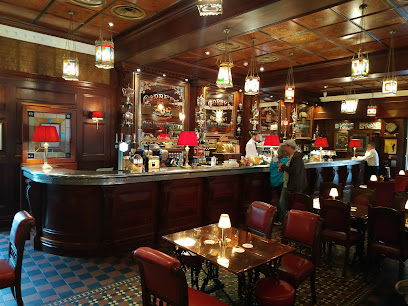
The Iconic Peace Wall: A Journey Through Belfast's History
Explore the Peace Wall in Belfast, a historical landmark that embodies the city’s journey towards peace and unity through vibrant murals and community stories.
The Peace Wall in Belfast is a powerful symbol of the city's complex history, offering visitors a unique glimpse into the past. This historical landmark not only serves as a canvas for vibrant murals but also as a reminder of the struggles and resilience of the communities that inhabit the area. Tourists can explore the wall, engage with local art, and reflect on the peace process that has shaped modern Belfast.
A brief summary to Peace Wall Belfast
- 15 Cupar Way, Belfast, GB
- +447592173372
- Visit website
- Monday 7 am-7 pm
- Tuesday 7 am-7 pm
- Wednesday 7 am-7 pm
- Thursday 7 am-7 pm
- Friday 7 am-7 pm
- Saturday 7 am-7 pm
- Sunday 7 am-7 pm
Local tips
- Visit early in the morning or later in the evening to avoid crowds and enjoy a more peaceful experience.
- Bring a camera to capture the stunning murals and the emotions they evoke.
- Consider joining a guided tour for in-depth stories and historical context behind the murals.
- Take time to read the messages on the wall, as they offer profound insights into the city's history.
- Respect the area and its significance; some murals are personal to the local community.
Getting There
-
Walking
If you are starting from the city center, head northwest towards Royal Avenue. Continue straight until you reach the intersection with Donegall Place. Turn left onto Donegall Place and walk until you reach the junction with Castle Street. Here, turn right and continue along Castle Street until you reach the junction with the A1. Cross the road and continue onto Smithfield Square, where you will find bus stops. Take the Metro Bus 10 or 11 towards the West. Alight at the stop for Cupar Way. From the bus stop, walk along Cupar Way for about 5 minutes. You will see the Peace Wall on your left at 15 Cupar Way, BT13 2RX.
-
Public Transport
From the city center, make your way to the nearest Metro bus stop. Take Metro Bus 10 or 11 heading towards the West. Stay on the bus for approximately 15 minutes. Get off at the Cupar Way stop. After disembarking, walk along Cupar Way for about 5 minutes, and you will arrive at the Peace Wall located at 15 Cupar Way, BT13 2RX.
-
Cycling
If you have access to a bike, start from the city center and head towards Donegall Place. Cycle northwest until you reach the junction with Castle Street. Turn right onto Castle Street, then continue straight until you reach Smithfield Square. From here, follow the signs for the Metro Bus lanes, and you can cycle along the designated bike paths. Keep an eye out for the signs directing you to Cupar Way. The Peace Wall will be on your left at 15 Cupar Way, BT13 2RX after about 15-20 minutes of cycling.
Discover more about Peace Wall Belfast
Iconic landmarks you can’t miss
Visit West Belfast
1.0 km
Explore West Belfast's vibrant culture, rich history, and delicious local cuisine in the heart of Northern Ireland.
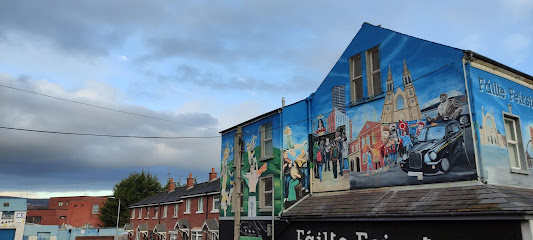
Falls Rd
1.2 km
Discover the vibrant murals and rich history of Falls Road in Belfast, a cultural gem that embodies the spirit of the city.
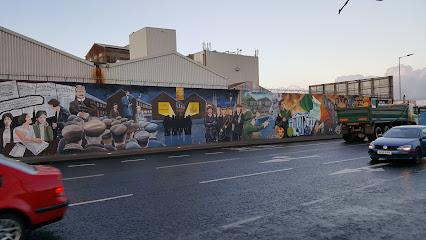
Belfastlad Tours
1.2 km
Discover the heart of Belfast through immersive local tours that blend history, culture, and culinary delights for an unforgettable experience.
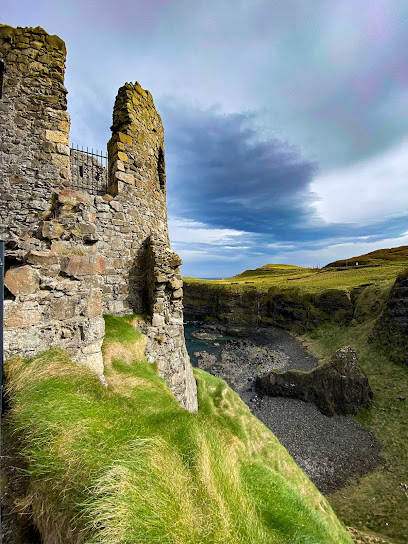
Carlisle Circus
1.5 km
Discover the lively atmosphere and rich history of Carlisle Circus in Belfast, where culture and modern life beautifully intertwine.

The Back Of Boots
1.6 km
Explore The Back Of Boots in Belfast, a sacred pilgrimage site offering a blend of spirituality and rich cultural heritage amidst the vibrant city life.
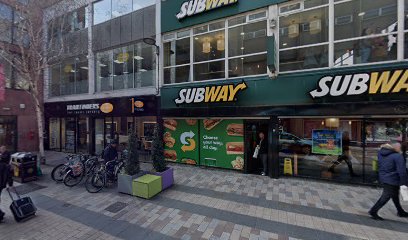
Mural
1.7 km
Discover the captivating mural in Belfast, a stunning representation of the city's culture, history, and artistic spirit, perfect for every traveler.
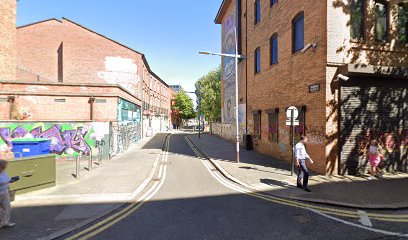
Belfast City Sightseeing
1.7 km
Discover Belfast's rich history and vibrant culture with Belfast City Sightseeing, your gateway to iconic landmarks and hidden gems in Northern Ireland's capital.
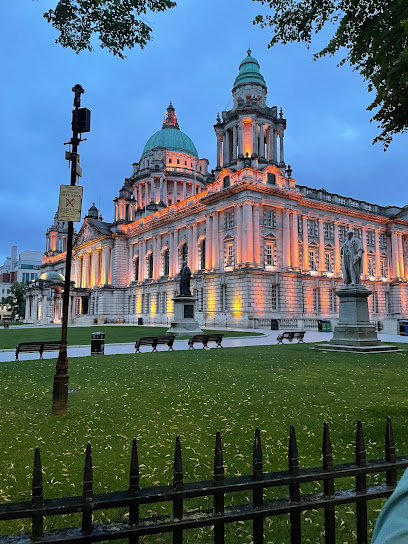
Donegall Square W
1.7 km
Discover the vibrant heart of Belfast at Donegall Square, surrounded by stunning architecture, gardens, and rich cultural experiences.
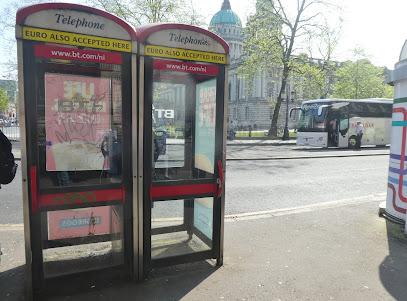
Hop On Hop Off Belfast Bus
1.7 km
Experience Belfast's rich history and vibrant culture with the convenient Hop On Hop Off Bus Tour, tailored for every traveler's adventure.
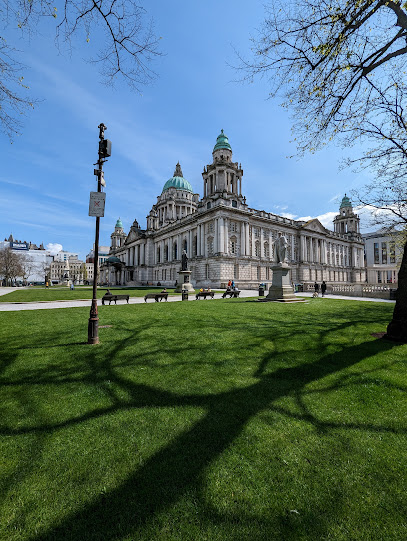
Donegall Square N & Donegall Square W
1.7 km
Explore the vibrant heart of Belfast at Donegall Square North & West, surrounded by stunning architecture and rich history. A must-visit for every traveler.
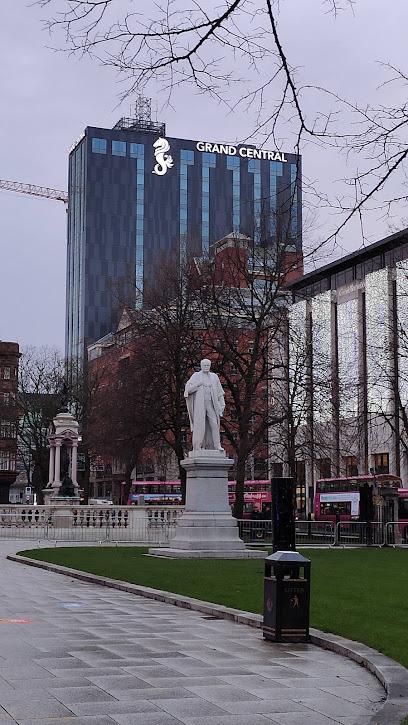
Visit Belfast
1.7 km
Explore Belfast's rich history and vibrant culture at Visit Belfast, the city's official tourist information center, your essential travel guide.
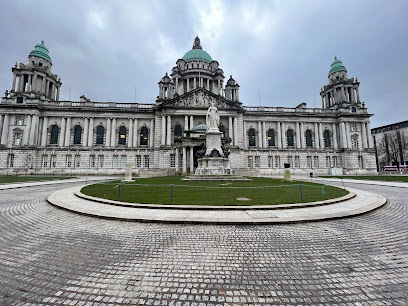
Treasure Trails
1.7 km
Explore Belfast's rich history and hidden gems with Treasure Trails, your interactive adventure guide through the city's vibrant streets.
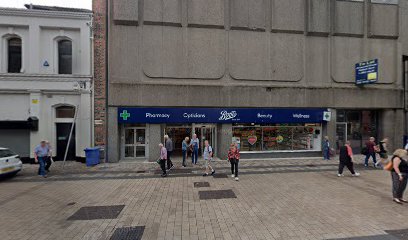
If Buildings Could Talk - Belfast Walking Tour
1.7 km
Explore Belfast's rich history and architectural heritage on the insightful 'If Buildings Could Talk' walking tour, where every structure reveals a story.
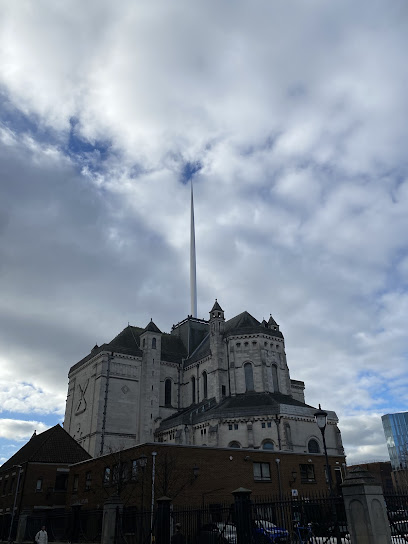
Belfast Free Walking Tour
1.7 km
Experience Belfast's rich history and culture through the insightful Belfast Free Walking Tour, perfect for all curious travelers exploring Northern Ireland's capital.
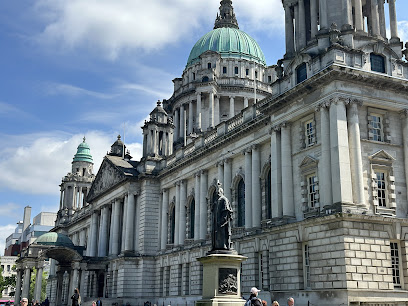
Mary Ann McCracken statue
1.7 km
Explore the Mary Ann McCracken statue at City Hall, a testament to the fight for women's rights and social justice in Belfast's history.
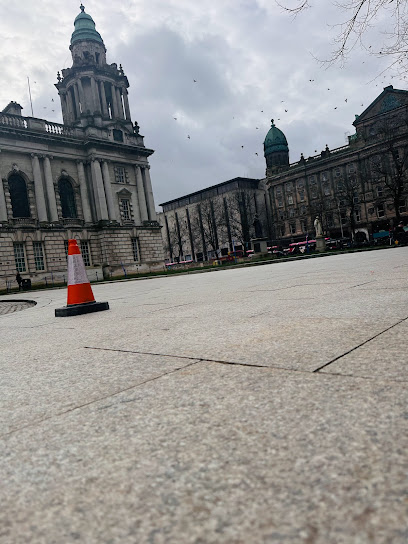
Unmissable attractions to see
Belfast Peace Lines
0.0 km
Explore the Belfast Peace Lines, a historic landmark symbolizing resilience, hope, and the journey toward peace in Northern Ireland.
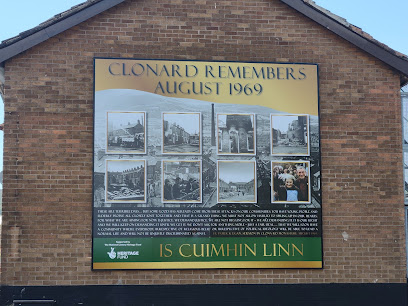
Clonard Martyrs Memorial Garden
0.1 km
Explore the Clonard Martyrs Memorial Garden, a serene tribute in Belfast that commemorates the lives of local martyrs amidst beautiful landscaping and historical significance.
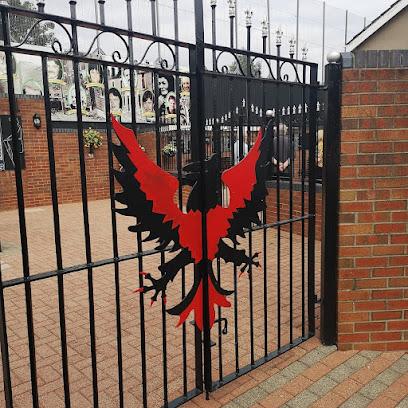
Clonard Monastery
0.1 km
Experience the tranquility and architectural beauty of Clonard Monastery, a serene Catholic church in Belfast's vibrant landscape.
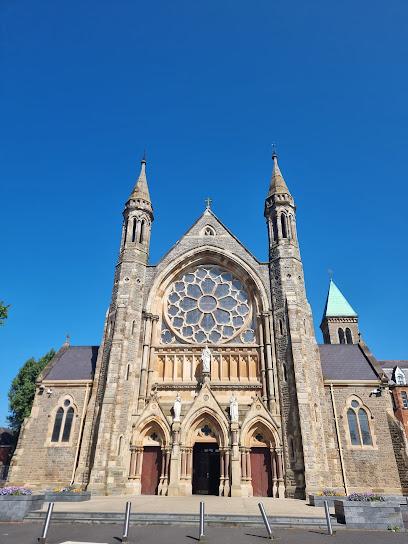
NI Black Taxi Tours, Belfast black taxi tours
0.2 km
Experience the compelling narrative of Belfast's past and present with NI Black Taxi Tours, where every ride tells a story.
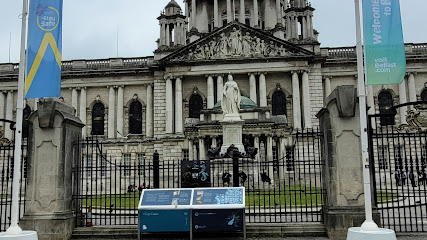
Irish Republican History Museum
0.4 km
Explore the Irish Republican History Museum in Belfast, a captivating journey through Ireland's rich and complex history of republicanism and independence.
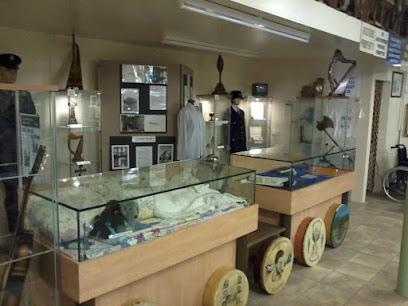
Bobby Sands Mural
0.4 km
Discover the powerful Bobby Sands Mural in Belfast, a striking tribute to resilience and the fight for justice in Northern Ireland's complex history.

Belfast Black Cab Tour
0.4 km
Uncover the rich history of Belfast with an immersive Black Cab Tour, guided by locals who share the city's vibrant stories and culture.
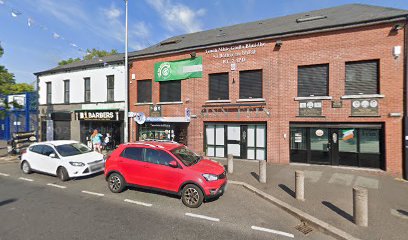
Shankill Road Memorial Garden
0.4 km
Explore the Shankill Road Memorial Garden: A serene space for reflection on Belfast's rich history and the resilience of its community.
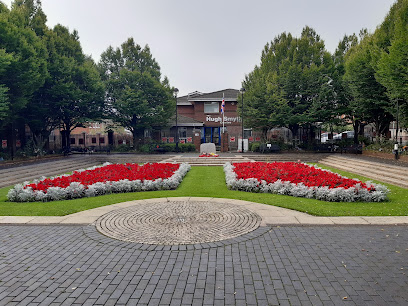
Garden of Remembrance
0.5 km
Discover the serene beauty and poignant history of the Garden of Remembrance in Belfast, a tranquil retreat for reflection and remembrance.
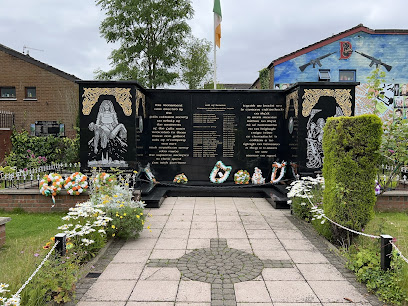
Game Of Thrones Tour From Belfast
0.5 km
Explore the enchanting landscapes of Northern Ireland with the Game of Thrones Tour from Belfast, where fantasy meets breathtaking reality.
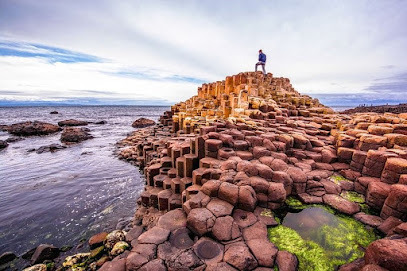
Shankill Graveyard
0.6 km
Explore Shankill Graveyard, a serene memorial park in Belfast, and discover stories of the city's rich history and heritage in a tranquil setting.
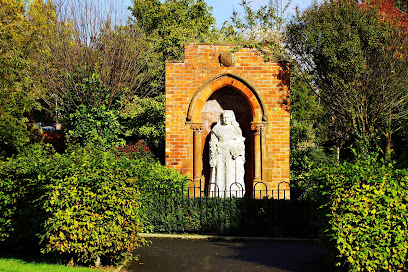
Black Taxi Tour Belfast
0.6 km
Explore Belfast's rich history and vibrant culture through an engaging Black Taxi Tour led by local guides who share personal stories and insights.
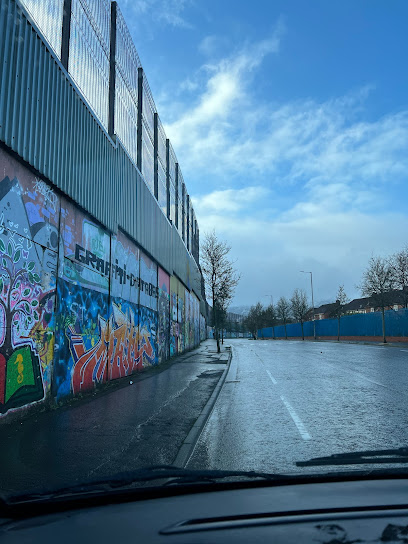
Solidarity Wall
0.6 km
Discover the artistic expression and profound messages of peace at the iconic Solidarity Wall in Belfast.
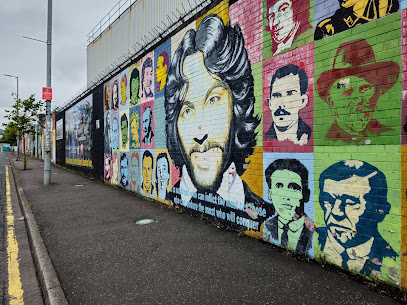
Mural art
0.6 km
Experience the stunning mural art of Belfast that tells powerful stories of the city's history, culture, and resilience through vibrant street art.
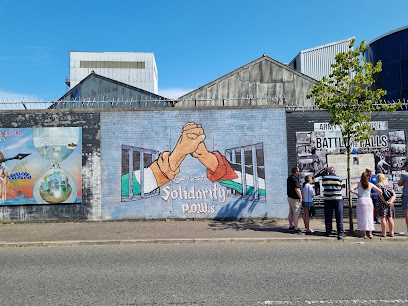
Conor's Corner
0.7 km
Experience the cultural tapestry of Belfast at Conor's Corner, where history and community come alive through engaging exhibits and local artistry.
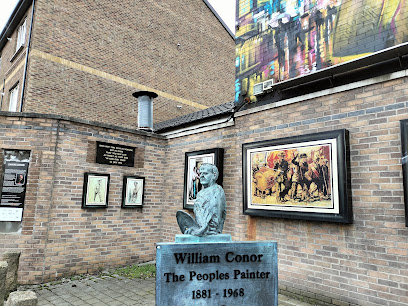
Essential places to dine
The Lantern Restaurant
1.5 km
Experience the best of British and modern European cuisine at The Lantern Restaurant in Belfast—where flavors meet tradition.
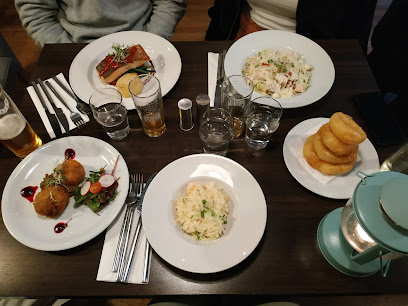
Bank Square Brasserie
1.5 km
Experience the vibrant flavors of modern European cuisine at Bank Square Brasserie in Belfast - where every meal is a celebration of local ingredients.
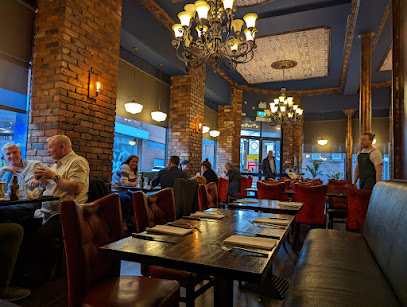
EDO Restaurant
1.5 km
Discover the best of modern European tapas at EDO Restaurant in Belfast - where flavor meets creativity.
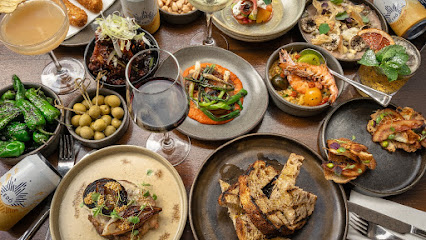
Howard Street
1.6 km
Experience the finest modern European cuisine at Howard Street in Belfast – where culinary artistry meets local flavor.
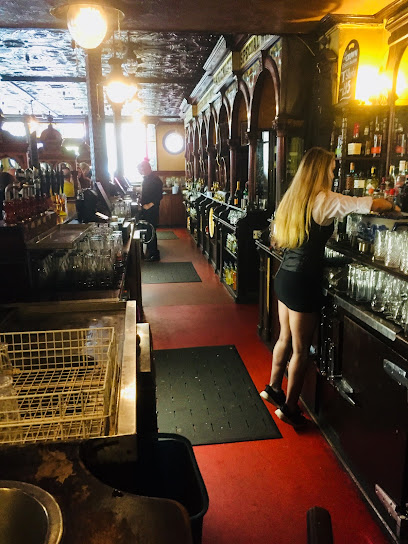
Mourne Seafood Bar
1.6 km
Experience the taste of the sea at Mourne Seafood Bar - where fresh flavors meet warm hospitality in Belfast.
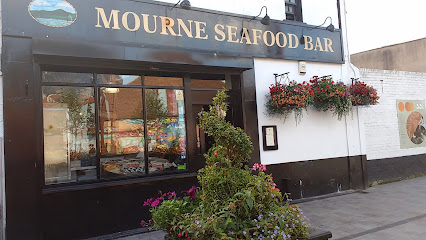
Stix and Stones City Centre
1.6 km
Experience exquisite steaks and authentic Irish cuisine at Stix and Stones City Centre, Belfast's premier dining destination.
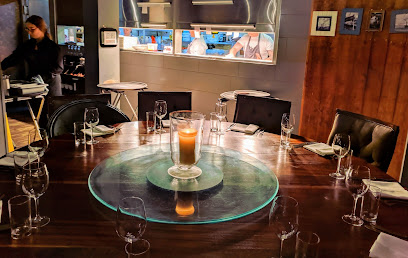
Home Restaurant
1.6 km
Experience the best of modern European cuisine at Home Restaurant in Belfast - where every dish celebrates local flavors and dietary inclusivity.
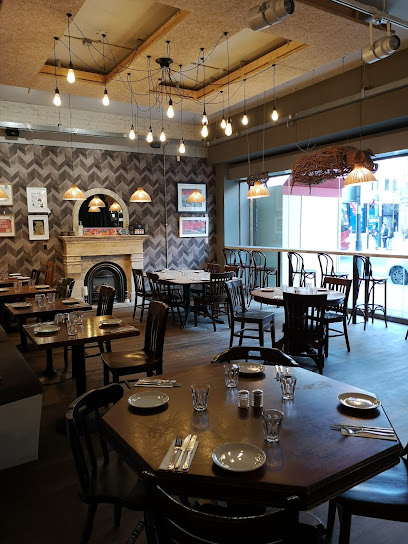
Philly Pump / The Allotment
1.6 km
Discover The Allotment in Belfast: A bistro where local ingredients meet innovative cuisine for an unforgettable dining experience.
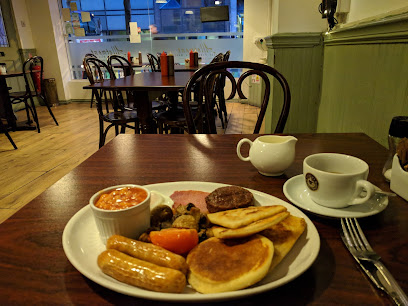
Jumon
1.6 km
Experience the vibrant flavors of South Asia at Jumon, Belfast's premier vegetarian and Asian restaurant.
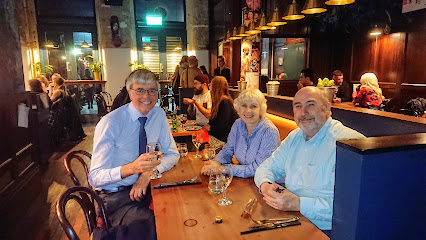
Yügo
1.6 km
Experience the best of Asian fusion cuisine at Yügo in Belfast, where innovative dishes meet a cozy dining atmosphere.
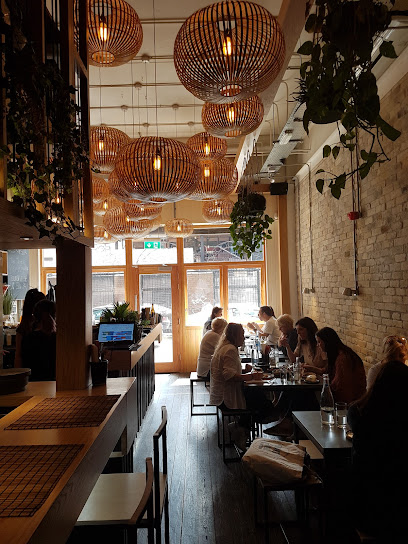
City Picnic
1.6 km
Discover City Picnic in Belfast: A family-friendly restaurant with diverse menu options including gluten-free delights and refreshing cocktails.
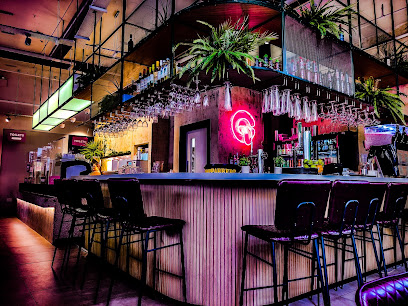
JAMES ST
1.6 km
Experience exquisite Modern European dining at James St in Belfast - where British flair meets French sophistication.
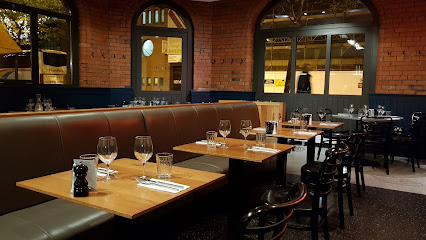
Deanes EIPIC
1.6 km
Experience exquisite modern European cuisine at Deanes EIPIC in Belfast - where culinary artistry meets local flavor.
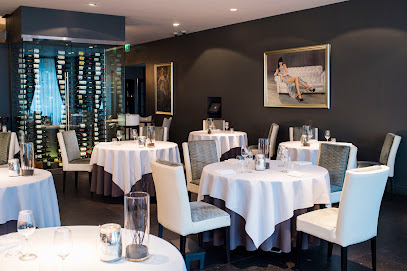
Actons restaurant
1.6 km
Discover the essence of Irish gastronomy at Actons Restaurant in Belfast – where every dish tells a story.
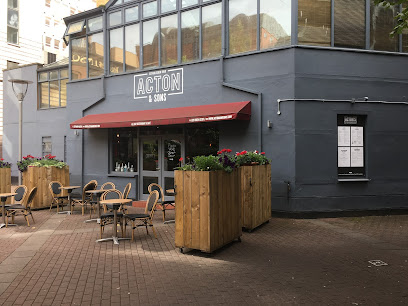
The Rusty Saddle
1.6 km
Experience the best grilled dishes at The Rusty Saddle in Belfast - where flavor meets atmosphere in a delightful dining experience.
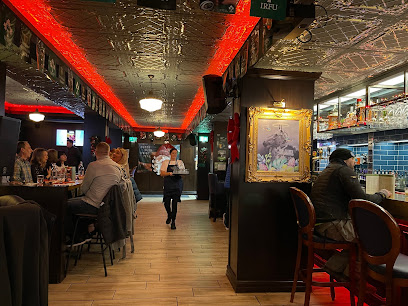
Markets, malls and hidden boutiques
Alchemy and Ashes NI
0.5 km
Explore the magical world of Alchemy and Ashes NI in Belfast, your destination for unique gifts, clothing, and metaphysical supplies.
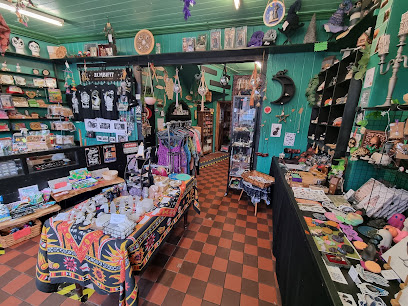
The Name Shops - Belfast
1.5 km
Discover unique gifts and personalized treasures at The Name Shops in Belfast, your destination for memorable souvenirs and keepsakes.

The Holy Shop
1.5 km
Discover The Holy Shop in Belfast - your destination for unique religious artifacts and spiritual gifts that inspire and uplift.
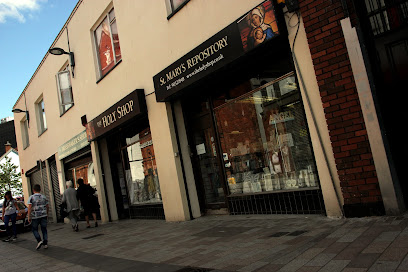
Great Northern Mall
1.6 km
Explore Great Northern Mall in Belfast, a vibrant shopping center offering diverse retail, dining, and entertainment experiences for every tourist.
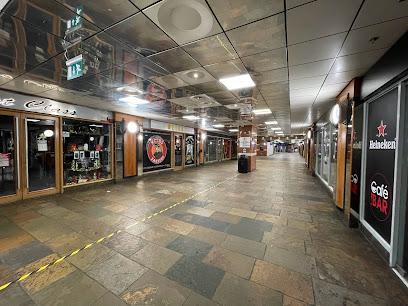
Top Gift
1.6 km
Discover unique souvenirs and local treasures at Top Gift, Belfast's charming gift shop offering an eclectic selection for every traveler.
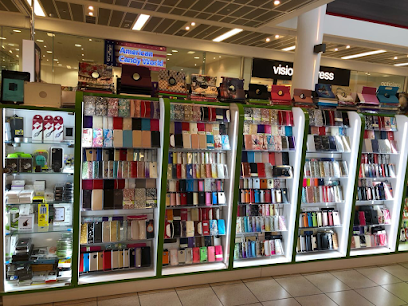
CastleCourt Shopping Centre
1.6 km
Discover shopping bliss at CastleCourt Shopping Centre in Belfast, where style meets variety in a welcoming atmosphere.
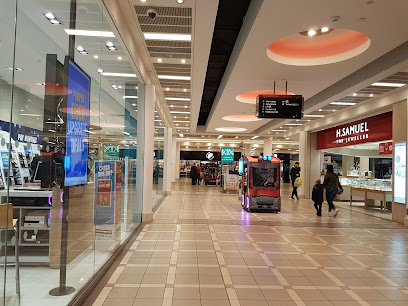
Norn Irish Gift Shop
1.7 km
Explore the heart of Irish culture at Norn Irish Gift Shop in Belfast, where unique souvenirs and artisan crafts await every traveler.
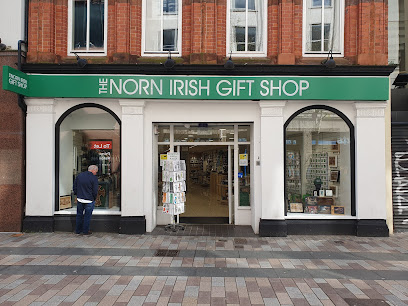
Little Heart
1.7 km
Explore Little Heart in Belfast for unique gifts and handmade treasures that celebrate local artistry and craftsmanship.
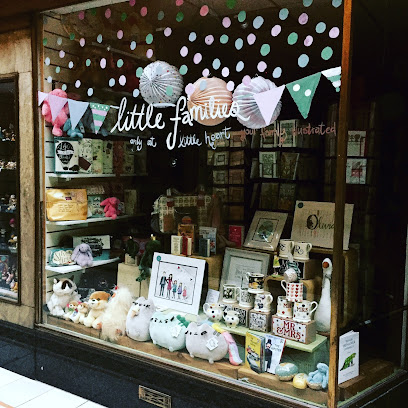
Fuzz Vintage
1.7 km
Explore Fuzz Vintage in Belfast for a unique shopping experience filled with timeless fashion pieces and sustainable choices.
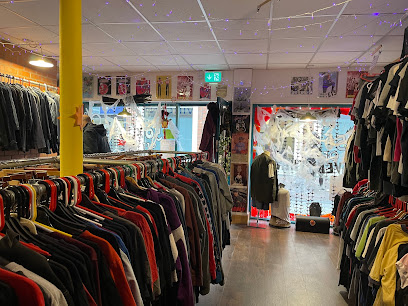
Montblanc Boutique Belfast
1.7 km
Explore the epitome of luxury fashion accessories at Montblanc Boutique Belfast, where timeless elegance meets exquisite craftsmanship.
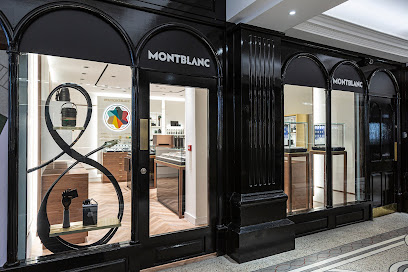
Queen's Arcade
1.7 km
Explore Queen's Arcade, Belfast's charming shopping centre, featuring unique shops, local artisans, and a delightful atmosphere for every visitor.

Carrolls Irish Gifts Belfast - Donegall Place
1.7 km
Discover the heart of Irish culture at Carrolls Irish Gifts Belfast, your go-to shop for authentic Irish goods and unique souvenirs.
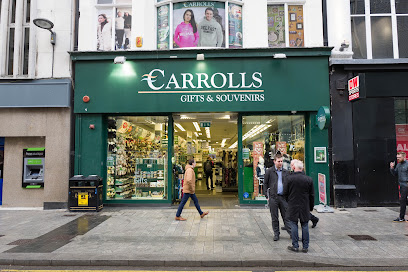
Forsight Belfast
1.7 km
Explore unique vintage and contemporary fashion at Forsight Belfast, where every piece tells a story and enhances your style.
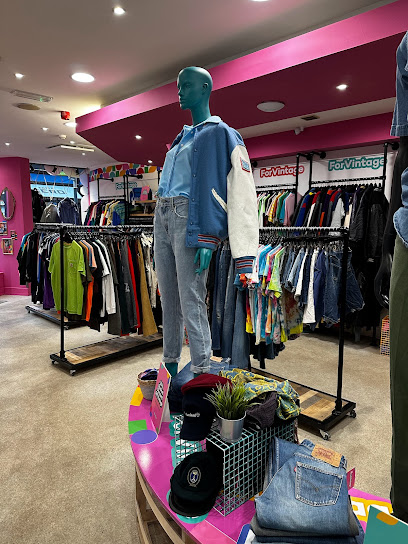
Petty Kingdom Vintage Clothing & Records
1.8 km
Explore the eclectic charm of Petty Kingdom Vintage Clothing & Records in Belfast, where unique fashion meets nostalgic music treasures.
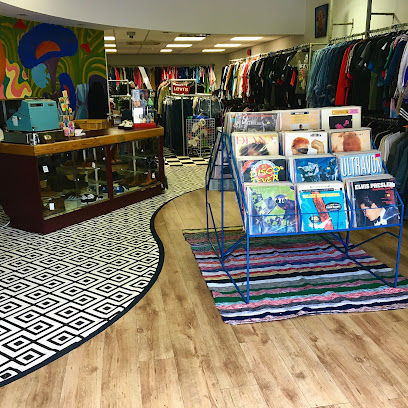
Noor Bazaar
1.8 km
Explore Noor Bazaar in Belfast for delightful local crafts and unique souvenirs that capture the spirit of Northern Ireland.
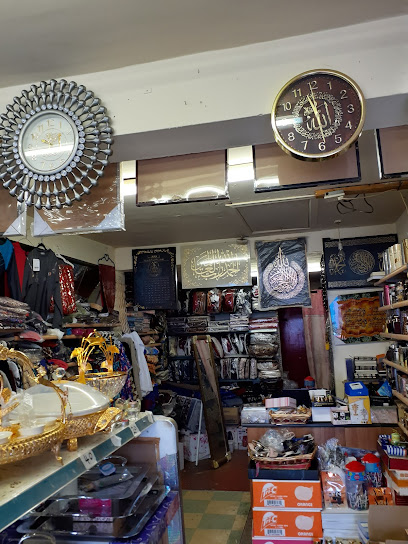
Essential bars & hidden hideouts
Nancy Mulligans Bar & Kitchen
1.4 km
Discover the lively atmosphere of Nancy Mulligans Bar & Kitchen, where sports, music, and delicious food come together in the heart of Belfast.
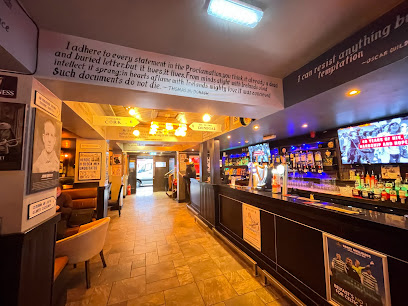
Maddens
1.5 km
Experience the heart of Belfast's pub culture at Maddens, where tradition meets vibrant socializing in a cozy setting.
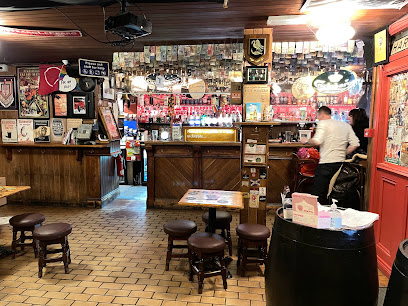
Sunflower Public House
1.5 km
Experience the heart of Belfast at Sunflower Public House, where lively atmosphere meets delicious food and drinks in a classic Irish pub setting.
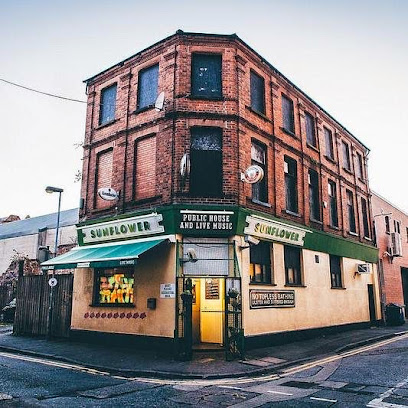
The Reporter. Bar
1.7 km
Experience the vibrant nightlife of Belfast at The Reporter Bar, a cozy spot for great drinks and a warm atmosphere.
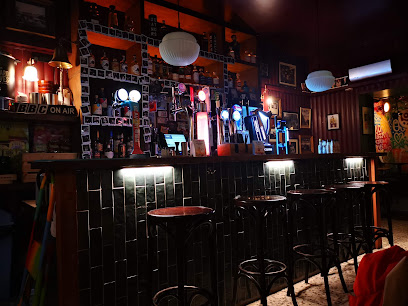
The Perch Rooftop Bar
1.7 km
Discover The Perch Rooftop Bar in Belfast: a vibrant cocktail bar with stunning views, premium drinks, and an unforgettable atmosphere.
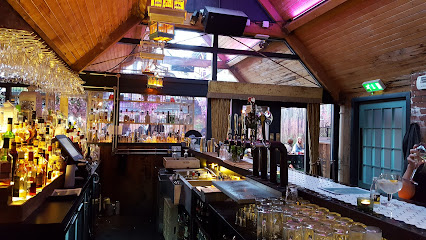
The Broken shaker Belfast
1.7 km
Discover The Broken Shaker Belfast, a cocktail bar renowned for its creative drinks and vibrant atmosphere, perfect for a memorable night out.
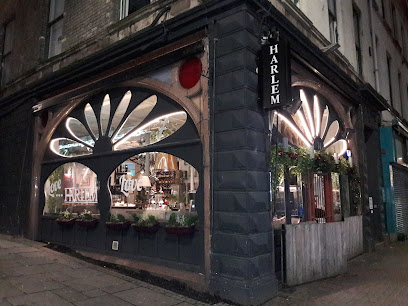
Queen's Café Bar
1.7 km
Experience the best of Belfast's grill cuisine and nightlife at Queen's Café Bar, where delicious food meets vibrant entertainment.
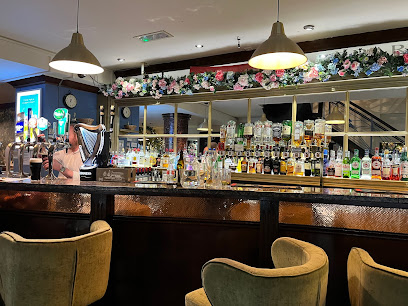
Monico Bars
1.8 km
Discover Monico Bars in Belfast, where traditional pub culture meets a vibrant dining experience, perfect for locals and tourists alike.

Pug Uglys
1.8 km
Discover the lively atmosphere of Pug Uglys, Belfast's top pub for delicious food, live music, and unforgettable nights out.
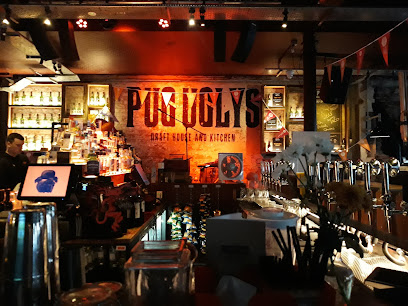
Whites Tavern
1.8 km
Discover Whites Tavern, a historic Irish pub in Belfast offering traditional cuisine, live music, and a vibrant atmosphere for an unforgettable experience.
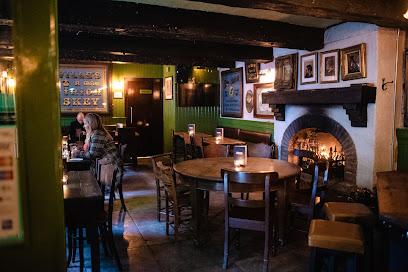
Filthy McNastys
1.8 km
Filthy McNastys: The Heart of Belfast's Nightlife with Live Music, Great Drinks, and Unforgettable Experiences Awaiting You.
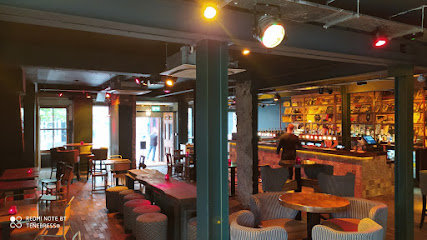
Revolución de Cuba Belfast
1.9 km
Discover the lively atmosphere and authentic Cuban flavors at Revolución de Cuba Belfast, where every meal is a celebration.

The Points
1.9 km
Experience the vibrant pulse of Belfast at The Points, a live music bar combining Irish culture, great food, and unforgettable performances.
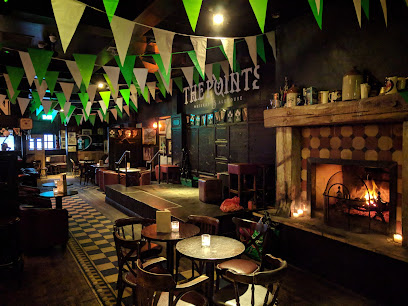
Duke of York
1.9 km
Discover the vibrant atmosphere and rich heritage of Duke of York, Belfast's iconic pub known for its local brews and live music.
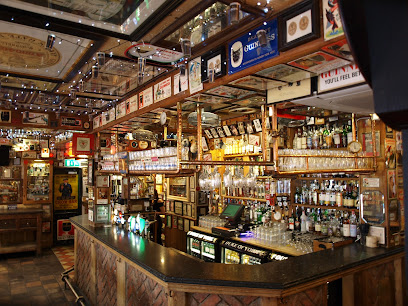
The Dark Horse
1.9 km
Experience the heart of Belfast's vibrant pub culture at The Dark Horse, where local brews and lively atmosphere await.
